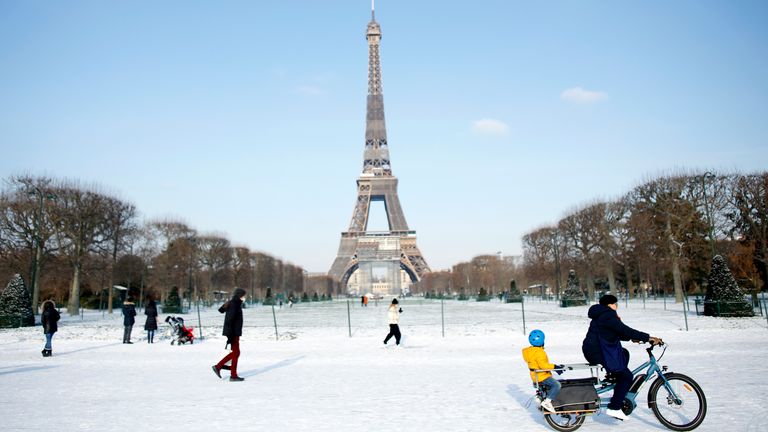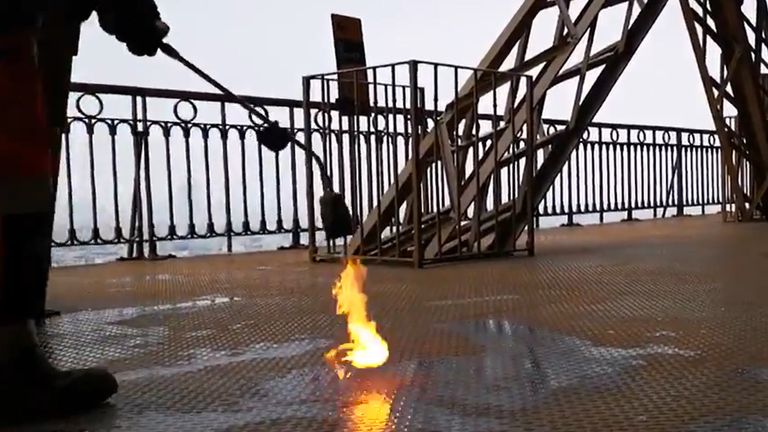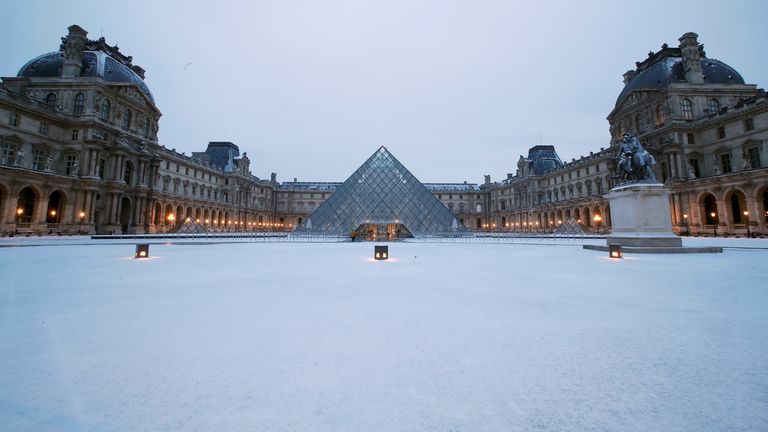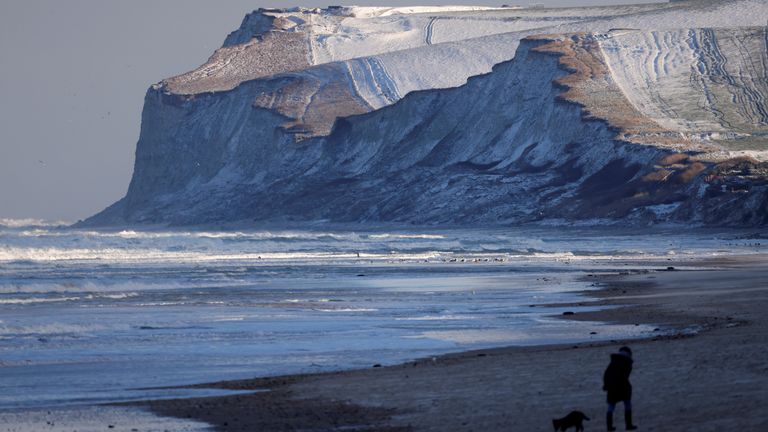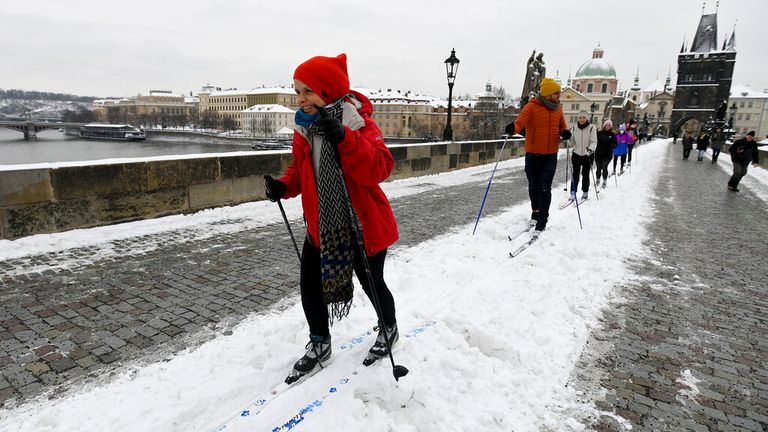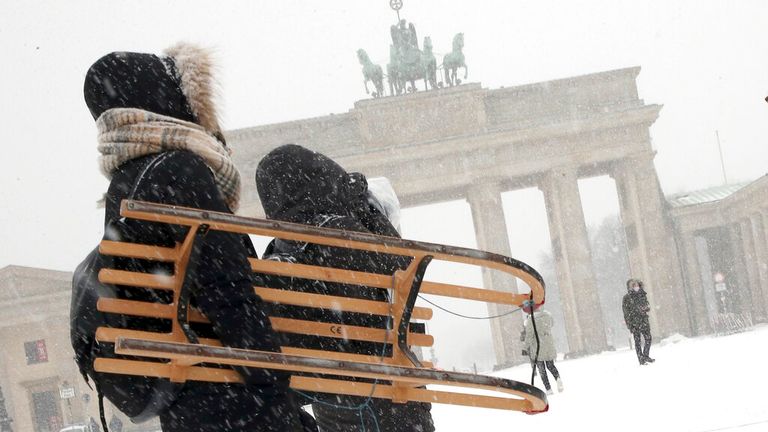Workers at the Eiffel Tower have been using a blowtorch to melt ice after northern France was hit by snow and freezing temperatures.
"When negative temperatures return, my floors get partially covered with ice!" tweeted the monument's official account.
"To get rid of it, we need to use a blowtorch because ice-control salt is too corrosive for the metal."
The tower has been closed for months due to COVID restrictions, but the city - like many across Europe - has been blanketed with snow in recent days.
School buses were stopped in some areas of Paris and authorities told parents to keep their children at home.
A lack of shovelling equipment meant some roads in Normandy and Brittany were also forced to close on Wednesday.
Many places in Western Europe are in the grip of their coldest February in years after Storm Darcy brought in Arctic weather at the weekend.
In Prague, cross-country skiers glided over the famous Charles bridge, sledges have been out in full force in the parks of Brussels, while many in the Netherlands have taken the chance to skate on frozen canals.
Germany's weather service said it is the coldest February there since 2012, but insisted it was an "outlier" that didn't contradict climate change.
A frigid -10C (14F) is forecast this evening in Berlin, and earlier this week hundreds of people were stuck overnight on the A2 in the west of the country as a 23-mile (37km) tailback formed.
In the UK, the lowest temperature for a decade was recorded this week when Altnaharra in the Scottish Highlands recorded -16.7C (1.9F).

